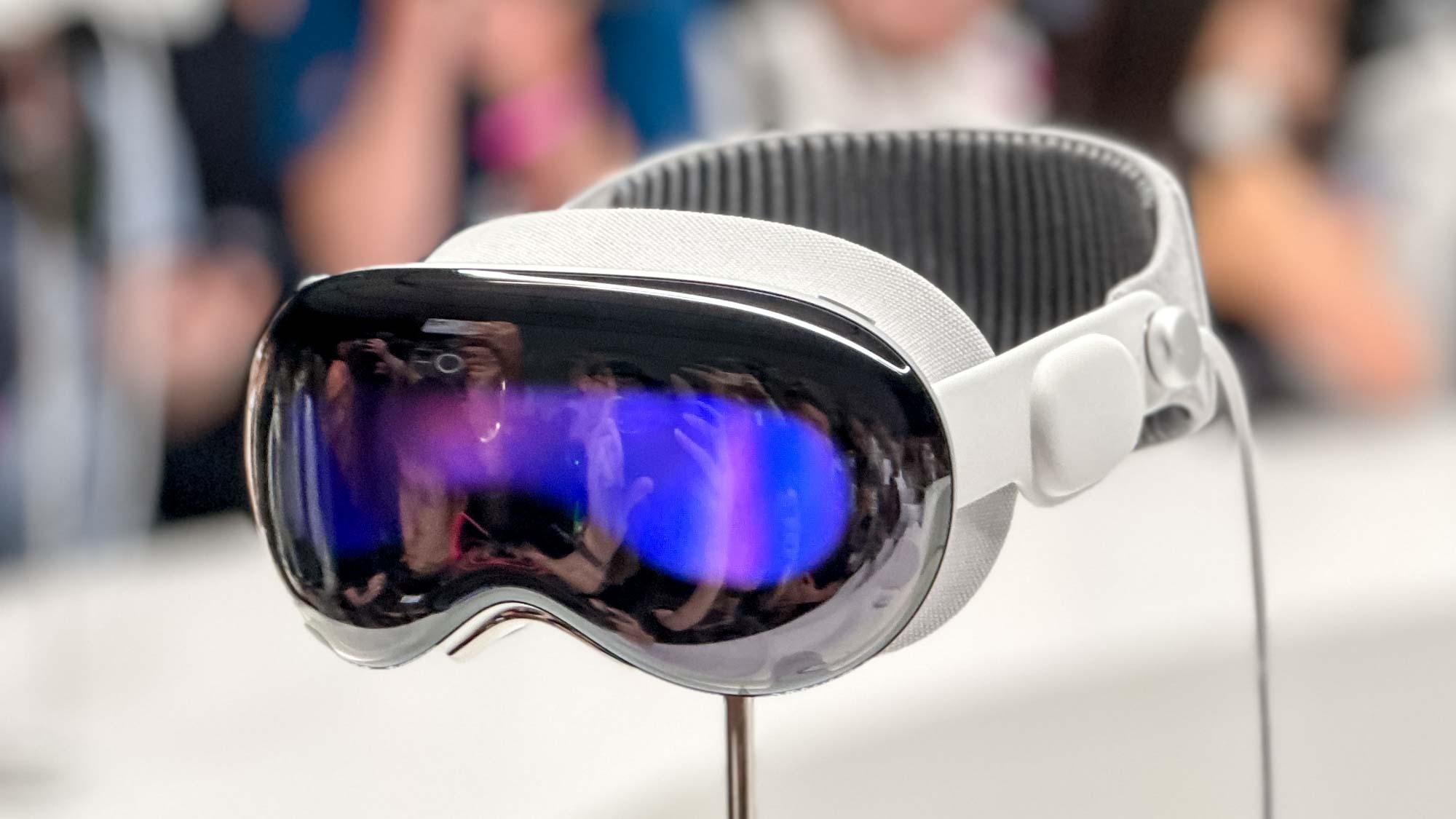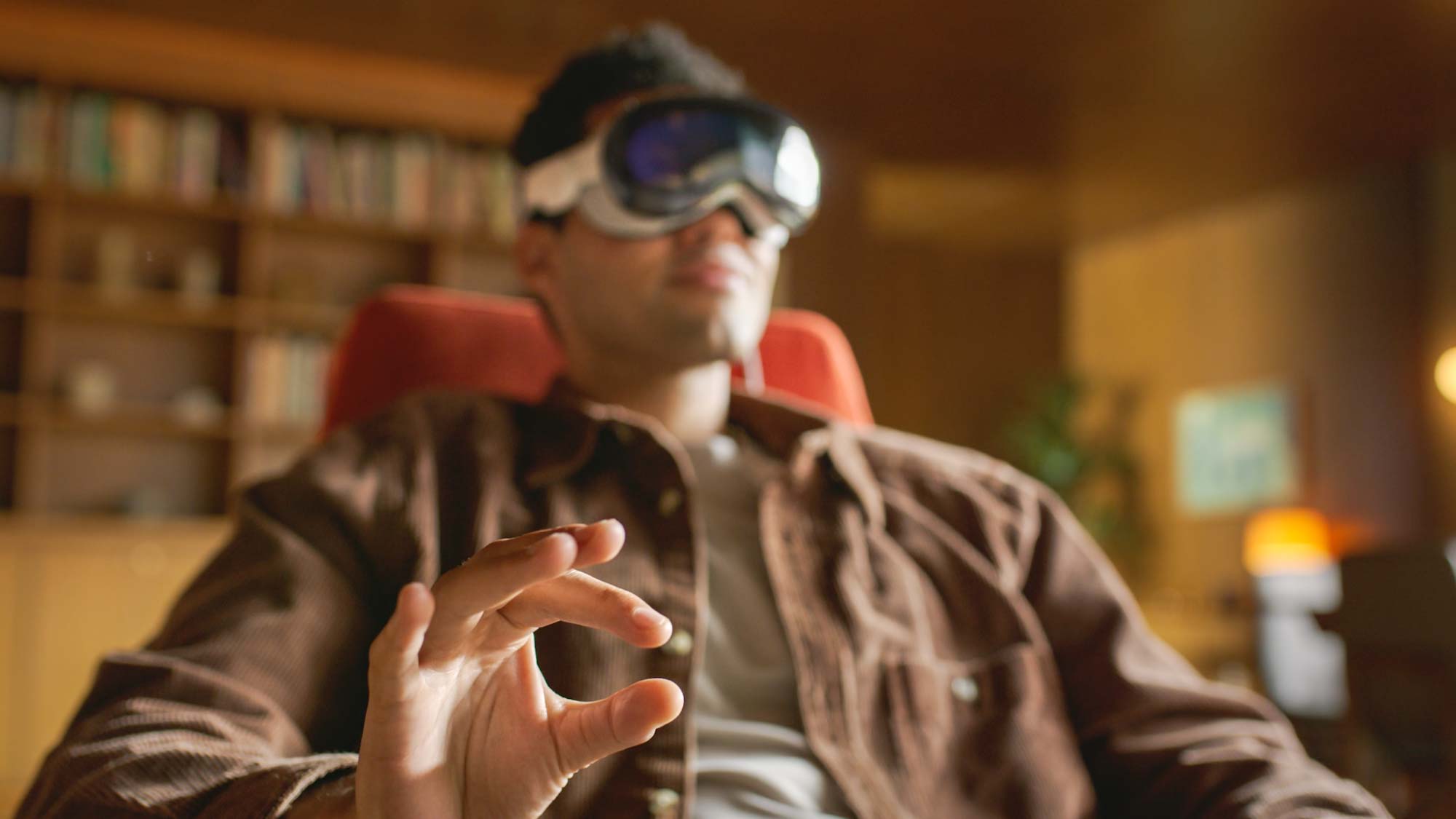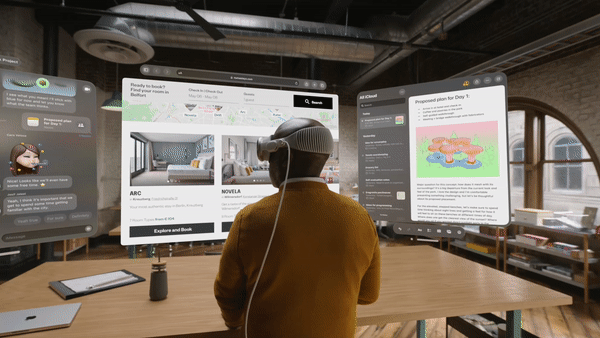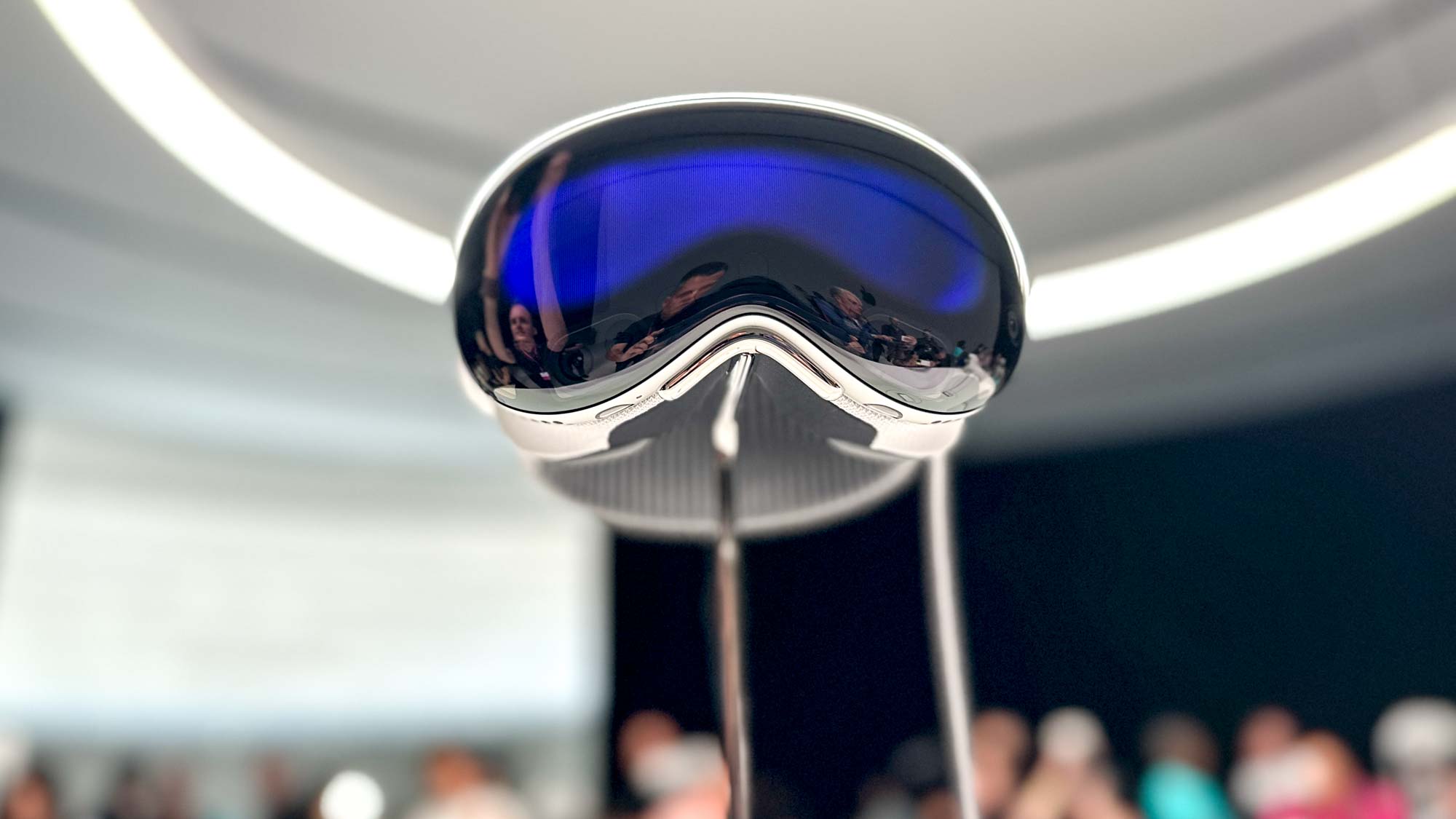
The Apple Vision Pro represents the biggest launch for Apple since the Apple Watch because it's the first time Tim Cook has led the company into a new category in nearly a decade. Apple is not aiming to create one of the best VR headsets; it's trying to forge a new type of device that focuses on spatial computing.
I've gone hands-on with the Apple Vision Pro for a demo and I'm impressed with the sheer fidelity of the video pass-through experience, the intuitive eye and hand tracking and some of the early apps that give us a taste of mixed reality. But at $3,500 could the Vision Pro flop, or could it be the start of the next big thing?
I asked three analysts who also tried the Vision Pro headset to get their take on Apple's moonshot.
Does the Vision Pro prove that Tim Cook's Apple can innovate?

Ben Bajarin, Creative Strategies: I think the Vision Pro is the most impressive piece of technology I've ever seen. So many Apple innovations that came before were evident in this product. From all their work in custom silicon, miniaturization, sensor fusion, camera sensors, custom sensors, all the things they learned in other products manifest in AVP to create the experience they did.
So much about the experience and demo was a "I can't believe this works so well, or I can't believe what I'm seeing type moment," Anyone who is even remotely a technology enthusiast has to be impressed with the remarkable technology Apple integrated into Apple Vision Pro.
Apple Vision Pro makes the iPhone, iPad, Mac, and even Apple Watch feel like dated technology.
Neil Cybart, Above Avalon
Neil Cybart, Above Avalon: There are several items that set Apple Vision Pro apart from anything we have seen before: A groundbreaking user input / interface, spectacular and vivid passthrough that makes you forget you are wearing a headset, valid use cases on Day 1 that are both familiar yet new, and innovative design elements and ideas regarding how to enrich presence. Apple Vision Pro makes the iPhone, iPad, Mac, and even Apple Watch feel like dated technology.
Based on Apple's existing product line, there shouldn't have been any doubt about Apple's ability to innovate. Vision Pro may be the best device that embodies just how much Apple leverages collaboration between its teams to come up with new user experiences.
Avi Greengart, Techsponential: Under Tim Cook’s leadership, Apple has built a huge services division, taken over the watch market, and its silicon design team has given Apple competitive differentiation across multiple product lines. While it is true that Tim Cook’s expertise is in operations, he has kept Apple’s org structure and culture intact. Yes, Apple Vision Pro shows that Tim Cook-led Apple can innovate, but it’s hardly the only indicator.
What impresses you most about the Vision Pro so far?

Bajarin: Other than the hardware, I was extremely impressed at how well the software worked. The eye tracking was nearly flawless. Pinch to tap was easy to pick up and start interacting with visionOS. It was such a mature software experience anyone would have no problem using the headset day 1.
The other things that impressed me was the remarkably high resolution and fidelity of the displays. Videos felt like 4k video and you couldn't see the pixels in the display like you can on many other VR headsets. Also, the pass-through video letting you see your environment had near zero latency and that was truly impressive.
Cybart: Spatial video and photos were one of the top experiences for me. I've never experienced anything like it before. The vividness was the thing that stood out. It was as if you could walk into the scene and engage with the people and objects. It is going to revolutionize memories.
Greengart: The overall user experience, especially the eye-tracking/finger-gesture interface, is simply unmatched. Apple is setting the baseline expectation for spatial computing very high, including focusing on the fact that this is intended as an apps-driven computing platform, not “metaverse,” “AR,” “VR,” “XR,” or “MR.”
How big an obstacle is the $3,500 price for adoption? And any other concerns?

Bajarin: Not concerned given both the market being primarily developers and technology enthusiasts. And that this product is very difficult to manufacture and Apple will have trouble making this product at scale anyway. That being said, they will likely sell all they can make, they just can't make that many.
It will take years for this technology to scale and get to a lower price point, but we have to start somewhere.
Obviously, the price limits initial consumer adoption, though I suspect that manufacturing constraints mean that Apple wouldn’t be able to supply millions of units even if millions of consumers lined up for them.
Avi Greengart, Techsponential
Cybart: The $3,499 price will impact accessibility out of the gate. Instead of entering the headset market with an entry-level product that adequately delights users, Apple is going with the premium product that makes wearers second guess if they are dreaming.
Apple’s Vision Pro pricing strategy will likely be based on the product line expansion model that the company has spent the past 15 years mastering with its existing products. The product Apple unveiled will likely one day sit next to lower-cost sibling headsets/glasses with narrower feature sets.
Greengart: In the short term, I’m not concerned at all. Obviously, the price limits initial consumer adoption, though I suspect that manufacturing constraints mean that Apple wouldn’t be able to supply millions of units even if millions of consumers lined up for them. It is also worth noting that Apple started off its use cases with productivity, and the only enterprise VR systems today that approach Apple’s capabilities cost considerably more than the Apple Vision Pro.
In the long term, I am quite concerned, but if there is enough demand, then the supply chain will ramp up, component yields will rise, and costs will come down. So we’ll have to see.
Do you think this could be the start of the post-iPhone era and where do you see spatial computing going?

Bajarin: I'd like to think it is possible. But I also believe if that happens it is many many years away. The most important point to make here is the success of this platform fully depends on software developers. If the software community doesn't embrace this platform then this category doesn't go anywhere for Apple. But this is why getting an extremely good V1 product into their hands is so important. Developers now need to experiment what this new platform means for software creation and help define where spatial computing goes.
Cybart: The post-iPhone era has been nearly a decade in the making. Spatial computing is another way of describing the wearables revolution – devices that can both put us back into our surroundings by removing distractions while enhancing our ability to feel different experiences by enhancing the concept of presence. The Apple Watch was the beginning. AirPods pushed the boundary. Vision Pro is the start of the next chapter.
Greengart: Yes. There are a lot of open questions around what apps and content will drive demand, and issues around eye and head comfort, but the Apple Vision Pro feels like the birth of a new computing platform. However, computing platforms tend to be additive; laptops and phones are enormously useful, and I expect that we will continue to rely on them for years or even decades to come, even if we spend at least some of the time with a computer on our face.
Do you think the Vision Pro will succeed or could it flop?
Bajarin: I think any opinion one way or the other would be terribly misguided. It's way to early to say either way, but I'd look at Apple's track record of success in new categories when pundits believed they had a flop on their hand.
The bigger question to me is not whether it's a flop, it's how big the market for face-worn computers are.
Ben Bajarin, Creative Strategies
I think it's more important to look at the possibility of success and what that means for the industry. Since it's a good thing. I think there is enough promise in the concept of spatial computing that seeing an ecosystem blossom from Apple, Meta, Google, and others is a net positive for the industry.
The bigger question to me is not whether it's a flop, it's how big the market for face-worn computers are. If it is not a large market, then there is a good chance Apple owns most the category. It's the saying there isn't a tablet market, there is an iPad market. Or there isn't a smartwatch market there is an Apple Watch market (Apple has ~80% share of smartwatch sales). This product will find its place in the market for Apple's customer base, that I have no doubt. The question is whether there is much of a market for anyone else.
Greengart: In the short term, Apple will sell every Vision Pro it can make to software developers and tech enthusiasts eager to get on the ground floor of a new computing platform that works within Apple’s ecosystem. Longer term success depends on two factors: what apps get built for it, and how quickly Apple can iterate and get the weight down and comfort up.
I’m less concerned about the price; if there are compelling use cases, people will be willing to spend to get those experiences, and then prices will naturally come down over time as the supply chain ramps up to meet demand. Besides, the Apple Vision Pro is already less expensive and more capable than many enterprise AR and VR systems on the market today.
Apple has put conditions in place for long-term success, but what that success will look like is a bit of a mystery. That’s just how new computing platforms work: everyone knew that constant connectivity and information access would be hallmarks of smartphones, but nobody predicted that shared narcissism and unlicensed taxis would be killer apps. I can’t wait to use Apple Vision Pro as a virtual monitor system and to watch movies, but I expect that its real value has yet to be coded.







